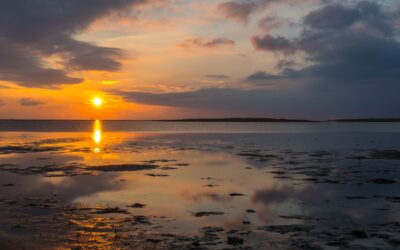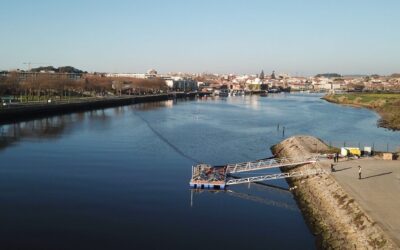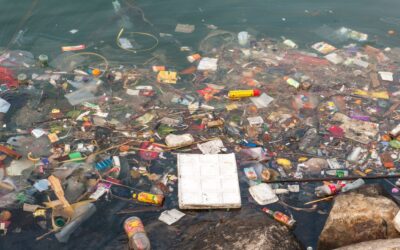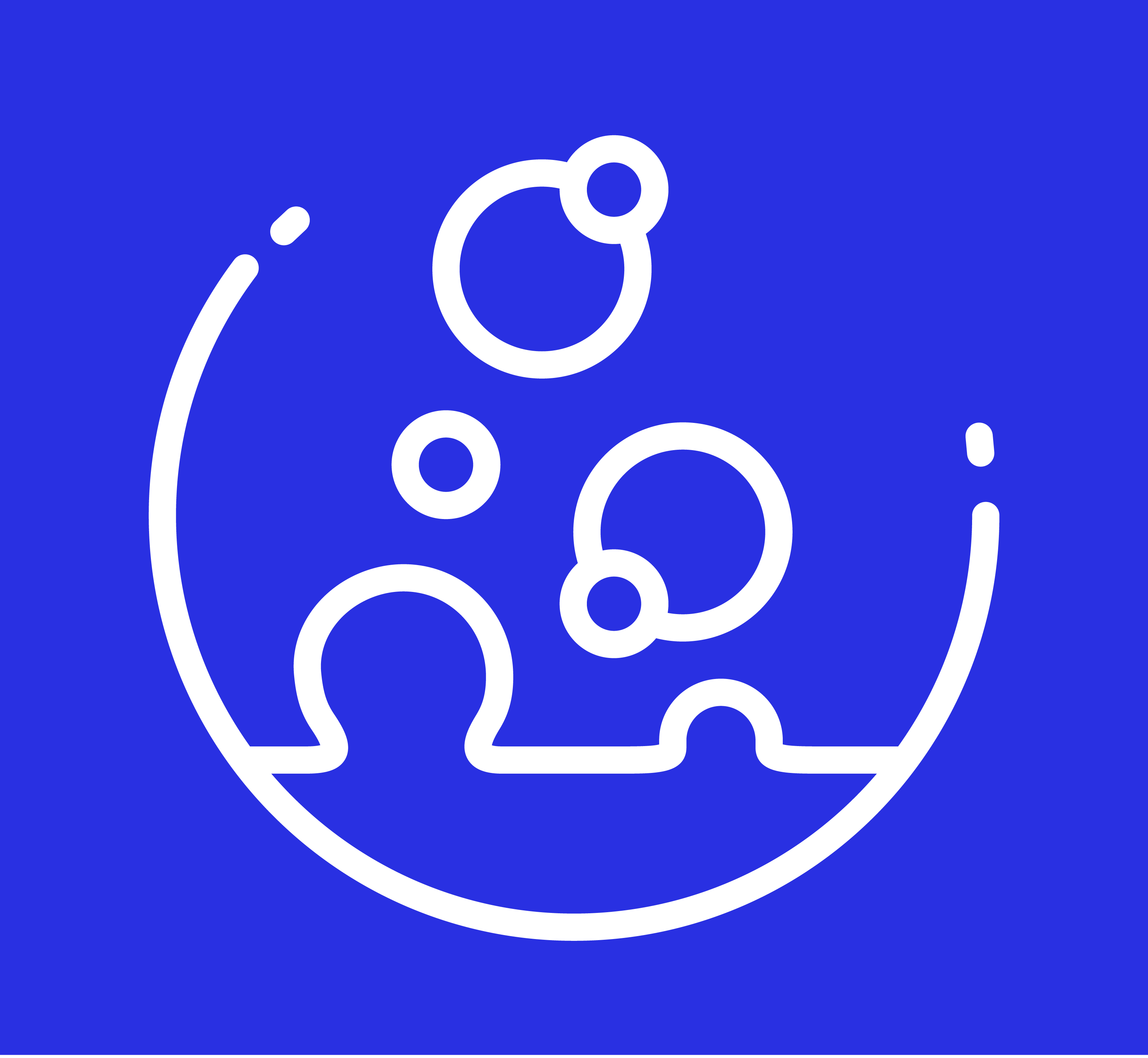APRIL 18, 2024, HARLINGEN – This UNESCO World Heritage Day, we celebrate the implementation of Bubble Barrier Harlingen – the first Bubble Barrier to stop plastic pollution from flowing into the UNESCO World Heritage site the Wadden Sea.
Citizens and governments come together
Plastic pollution is an ever-growing global crisis, posing a severe threat to ecosystems and marine life worldwide. The Wadden Sea is one of the last remaining large-scale intertidal ecosystems, where natural processes continue to function largely undisturbed. The area is home to numerous plant and animal species, including many red-listed species like godwit, sand plover and porpoise. Plastic pollution poses significant health risks to these animals, including the risk of choking, starvation, and entanglement.
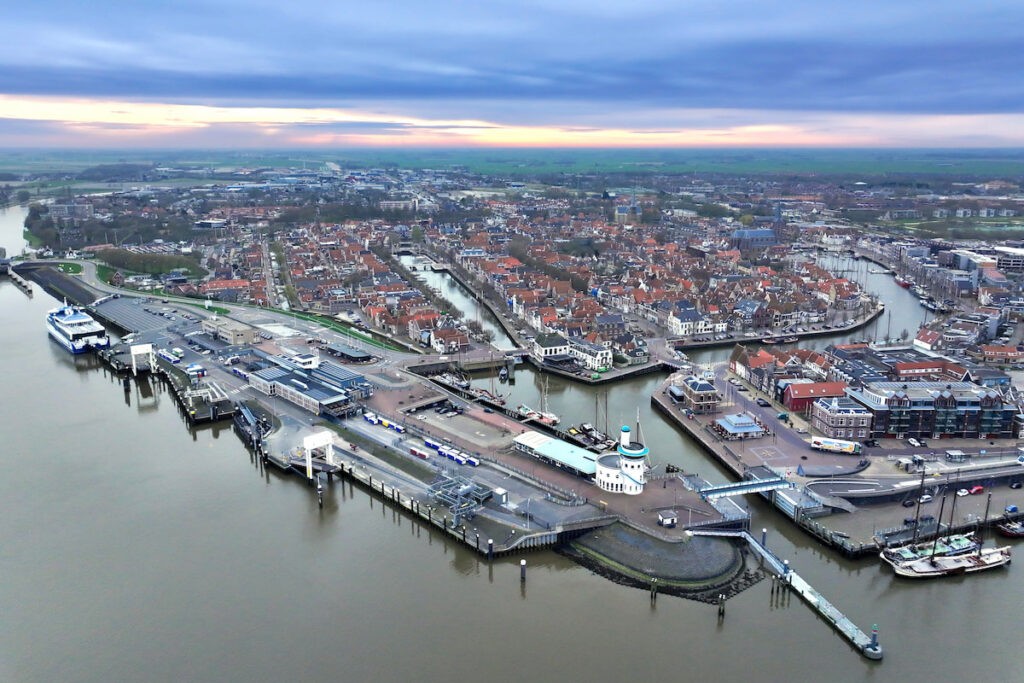
Harlingen, as Friesland’s sole seaport and the gateway to the Wadden Sea, holds a central role in safeguarding this precious UNESCO World Heritage Site. Henk Prins, a dedicated local citizen, has been cleaning Harlingen’s waterway shores for years, drawing attention to the urgent issue of plastic pollution. The municipality of Harlingen recognised the gravity of the situation and embarked on a mission to implement a long-term Bubble Barrier in collaboration with Provincie Fryslân and Rijkswaterstaat, sponsored by Waddenfonds.
Gerben Huisman, director of Waddenfonds states: “Today, with the opening of Bubble Barrier Harlingen, we moved one step closer towards our goal of investing in the right initiatives that purposefully help protect the Wadden Sea environment.”
Hendrik Sijtsma, councillor in Harlingen adds: “Acting together to protect our environment and work towards a clean and healthy living environment is one of our top priorities as a city. Thirty of our residents also voluntarily clean up plastic on the streets during their weekly walk through the city. I’m thankful for the support of our partners who made the Bubble Barrier possible.”
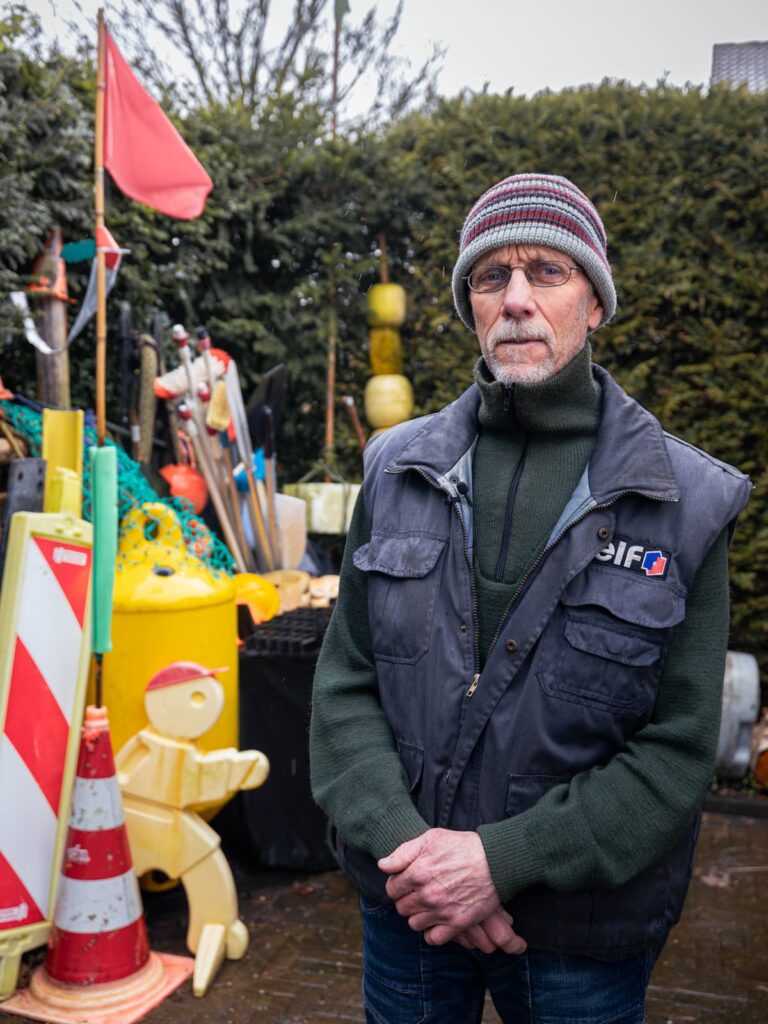
A smart solution to plastic pollution
The Bubble Barrier, developed by The Great Bubble Barrier, captures plastic pollution in waterways with air bubbles. Francis Zoet, co-founder and Operational Director of The Great Bubble Barrier explains: “The system operates 24/7 without disrupting regular canal activities, making it a durable and effective solution to combat plastic pollution close to the source.” Extensive tests have proven the Bubble Barrier system catches particles as small as 1 mm and intercepts 86% of the floating test material.
The first Bubble Barrier was installed in Amsterdam in 2019, followed by Katwijk in 2022, and Vila do Conde, Portugal in 2023. Bubble Barrier Harlingen will be the third Bubble Barrier in the Netherlands and fourth in Europe. It is strategically placed in the Van Harinxmakanaal to catch plastic pollution before it flows into the Wadden Sea.
Matthijs de Vries, deputy of the Provincie Fryslân, says: “As a province bordering the Wadden Sea, we know how important a healthy diverse habitat is for the plants and animals in the Wadden Sea. Bubble Barrier Harlingen contributes to this in an innovative way by catching plastic on, but also under the water surface. This keeps the Wadden area cleaner, which, among others, benefits birds and fish.”
How does it work?
The Bubble Barrier consists of a bubble curtain, a catchment system, and an air supply. The bubble curtain is created by pumping air through a perforated tube lying on the bottom of the canal. This generates an upward current which directs plastics to the surface. By placing the bubble curtain diagonally across the canal, the natural flow of the waterway will push the plastic waste to the side and into the catchment system. Once captured, it can easily be removed from the water by the municipality.
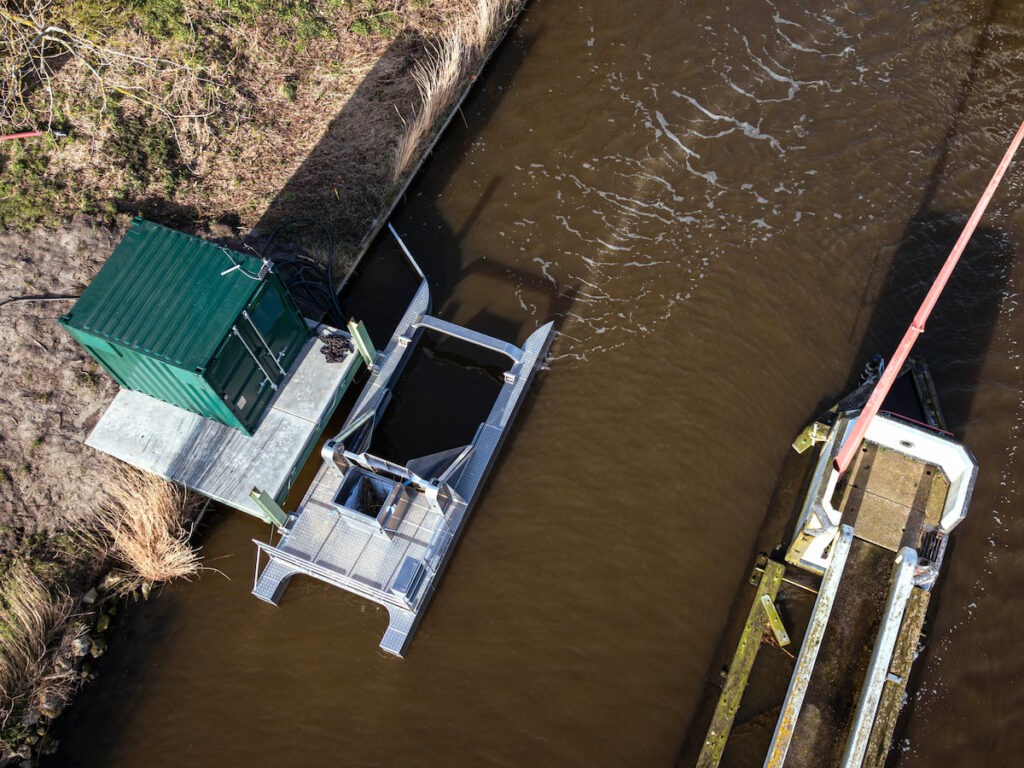
Looking towards the future
Bubble Barrier Harlingen will be unveiled on the 23rd of May 2024 during the official launch event. To further exhibit the potential of the Bubble Barrier, the Wageningen University & Research (WUR) researches plastic by monitoring the catch and environmental specialists from ATKB will perform research on fish migration.
“We are happy that the Bubble Barrier in Harlingen is in place and can make a positive contribution to combat plastic pollution. Now that the system is operational, we hope to simultaneously gain insight and knowledge about the effects of this system on fish migration,” said Floris van Bentum, Plastic-free Wadden project leader at Rijkswaterstaat.
As the project kicks off all partners look forward to seeing the lasting impact the Bubble Barrier Harlingen will have on catching plastic pollution and keeping the Van Harinxmakanaal, Wadden Sea and beyond plastic-free.
Read more about Bubble Barrier Harlingen
Videos, photos, illustrations, and animations can be found in the press kit.
Interviews with the collaborating partners can be requested via press@thegreatbubblebarrier.com.

